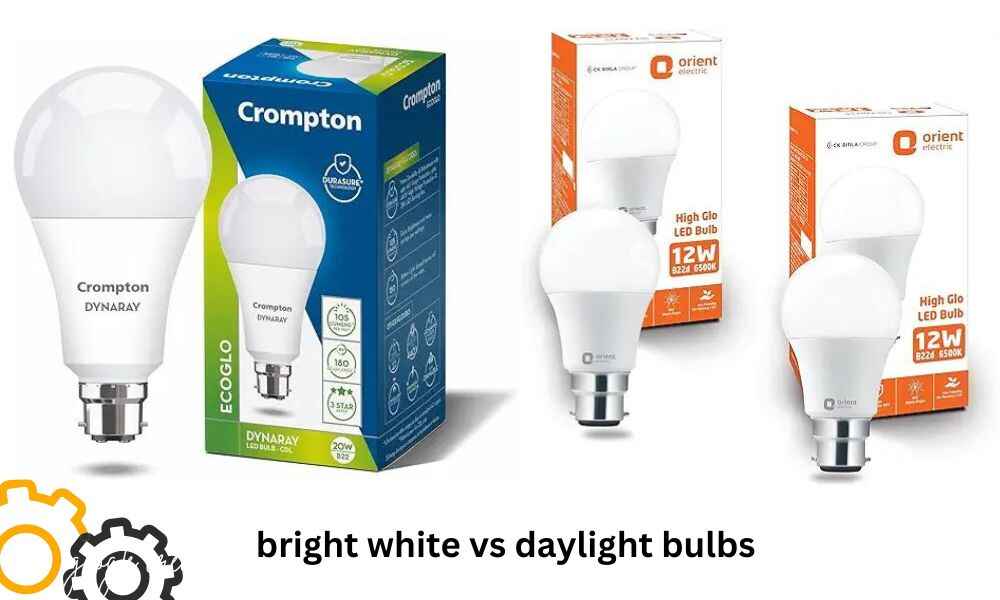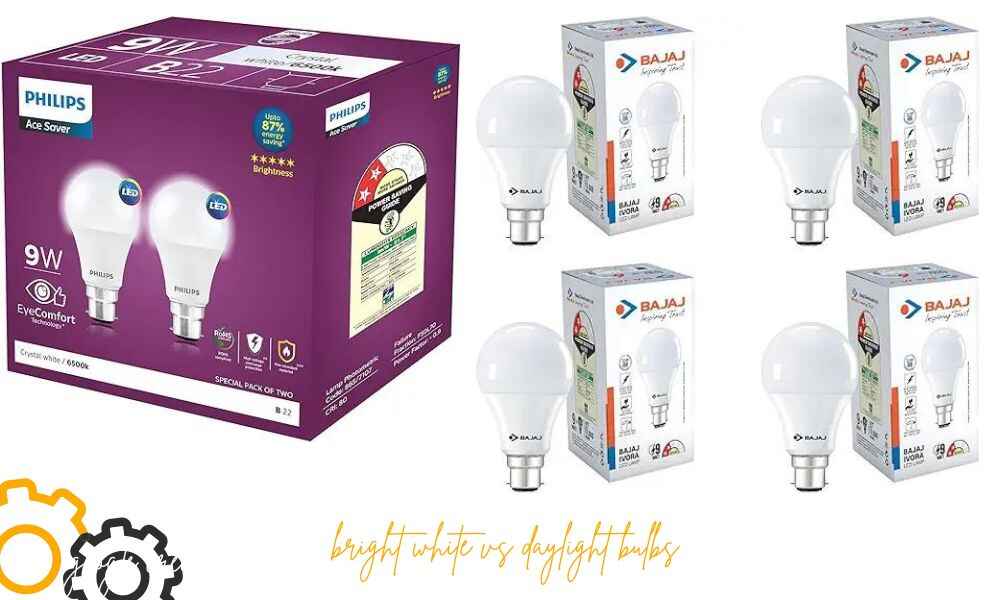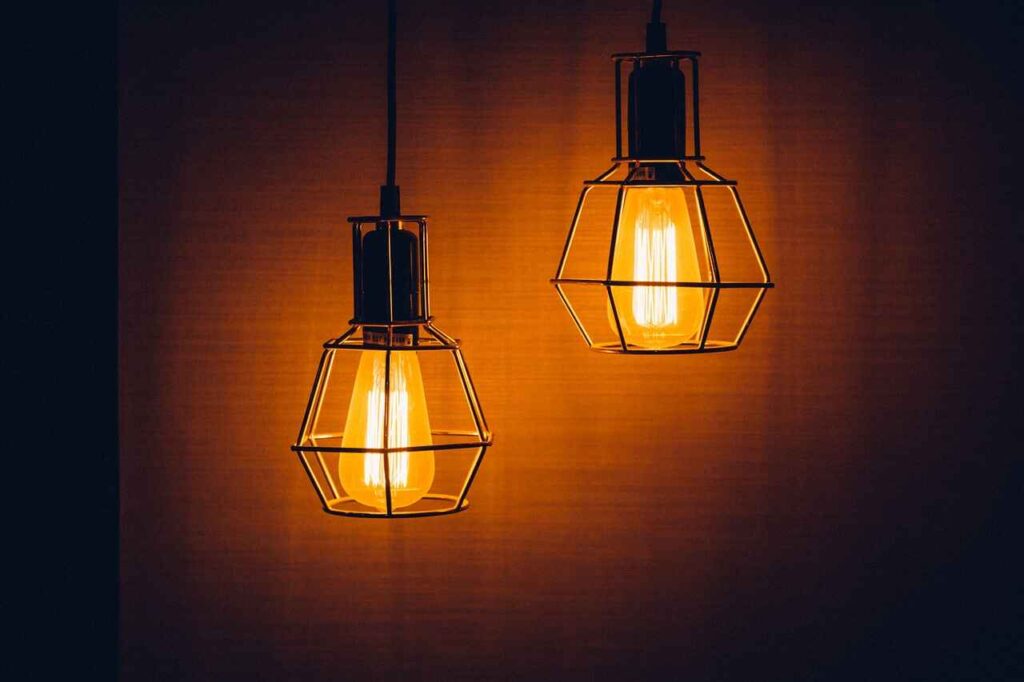Knowing the difference between bright white vs daylight bulbs is crucial in choosing the right lighting for your home or office. These two types of bulbs can be used in different settings with various color temperatures. Daylight and bright white bulbs will be explained in this article, highlighting their benefits and appropriateness towards specific needs in individual cases.

A General Introduction to Color Temperature
Color temperature measures the color of light shining out from luminaires. This is expressed by Kelvin(K). Higher Kelvin ratings give light which is cold (or blue) in appearance whereas; lower Kelvin ratings produce bulbs with warm (yellowish) color.
- Warm White: 2700K to 3000K
- Bright White: 3500K to 4100K
- Daylight: 5000K to 6500K
Understanding these categories helps you choose the right light for your space.
What Kind of Light Bulbs Are Bright White?
The color temperature of bright white light bulbs usually ranges from 3500K to 4100K. Their light is a neutral white that is less yellow than warm white, but it is not as blue as daylight bulbs.
Benefits of Bright White Bulbs
- Versatility: Suitable for various spaces like kitchens, bathrooms, and garages.
- Improved Visibility: This makes jobs easier by providing bright, clean light.
- Aesthetic Appeal: Gives interior spaces a crisp, contemporary appearance.
- Mood Improvement: The neutral light can create an energetic environment.
Characteristics of Bright White Bulbs
- Color Temperature: Bright white bulbs typically have a color temperature between 3500K and 4100K.
-
Light Quality: It is as clear and brilliant as midday natural daylight.
-
Energy Levels: These lights are perfect for places that are lively since they emit a lively ambiance.
What Kind of Light Bulbs Are Daylight?
In the neighborhood of 5000K to 6500K is the color temperature of daylight bulbs. They make a bright, bluish-white colored light similar to natural daylight.
Advantages of Daylight Bulbs
- Natural Light Simulation: For areas with minimal natural light, natural light simulation is perfect.
- Improved Concentration: Helps increase focus and productivity.
- Color Accuracy: Better color rendering is provided by color accuracy, which is advantageous for precise activities.
- Boosts Mood: The bright light can reduce eye strain and improve overall mood.
Bright White vs Daylight bulbs: What’s the Difference?
1. Bright White
Neutral light from bright white lightbulbs has a warm-to-cool tone balance. They are perfect for situations requiring both attention and relaxation. Common uses include:
- Kitchens: Offers bright lighting for cleaning and cooking.
- Bathrooms: Offers a fresh and clean look.
- Home Offices: Enhances visibility without causing glare.
2. Daylight
Daylight bulbs produce a bluish-white light similar to noon daylight. They are perfect for areas requiring high visibility and focus. Common uses include:
- Workspaces: Boosts concentration and reduces fatigue.
- Art Studios: Improves color accuracy in artistic endeavors.
- Reading Areas: Provides bright light to prevent eye strain.

Which Is Brighter, Bright White vs Daylight bulbs?
Daylight bulbs are generally brighter than bright white bulbs due to their higher Kelvin rating. They produce more blue light, which can give rooms a brighter, more lively appearance.
Which Is Better, Bright White or Daylight White?
The ideal option will vary depending on your needs and the lighting conditions in the area.
For Relaxing Environments
Bright White: Suitable for living rooms and bedrooms where a calm and balanced light is desired.
For Work or Study Areas
Daylight: Ideal for craft spaces and studios where precise color representation is essential. The natural, intense light enhances concentration and productivity.
For Artistic and Creative Spaces
Daylight: Ideal for craft spaces and studios where precise color representation is essential.
For Health and Well-Being
Daylight: Mimics natural sunlight, which can boost mood and reduce eye strain.
For Energy Efficiency
Both bright white and daylight bulbs can be energy-efficient, especially when using LED technology. However, daylight bulbs often have higher lumens per watt, making them slightly more efficient.
Bonus: Check This Smart Light with Tunable White!
Purchase a smart light with tunable white for the best of both worlds. This enables users to regulate its color temperature from warmth to coolness in accordance with their preferences. Therefore, it will boost coziness and effectiveness in every room.
Conclusion: bright white vs daylight bulbs
The decision between daylight and bright white vs daylight bulbs depends on your personal needs and preferences. For restrooms, kitchens, and work areas where clear, bright light is necessary, bright white lightbulbs are fantastic. When you want a natural, energizing light in your living rooms, reading nooks, and home offices, daylight bulbs are perfect. When choosing, take into account the function of the space, your preferences, and energy efficiency. Proper lighting can enhance any space’s atmosphere and make it more functional.
For a versatile lighting solution, consider smart bulbs with tunable white light. They offer the flexibility to adjust color temperature to suit any environment. Whether you need a relaxing ambiance or a bright workspace, there is a perfect lighting option for you.
Read Also: what is the difference between a19 and a21 bulbs
Which is better for reading: bright white or daylight bulbs?
Daylight bulbs are usually better for reading. They reduce eye strain by mimicking natural light.
Can I use bright white bulbs in my living room?
Yes, but they might make the space feel more clinical. Daylight bulbs are generally better for creating a cozy, natural ambiance.
Are daylight bulbs good for photography?
Yes, daylight bulbs are excellent for photography. They provide true color representation and a natural look.
Do bright white bulbs consume more energy than daylight bulbs?
Energy consumption depends on the bulb type (LED, CFL, incandescent) rather than the color temperature. Both bright white and daylight bulbs are available in energy-efficient LED options.
Can I mix bright white and daylight bulbs in one room?
You can, but it might create a disjointed look. It’s usually better to stick with one type for a cohesive lighting scheme.


